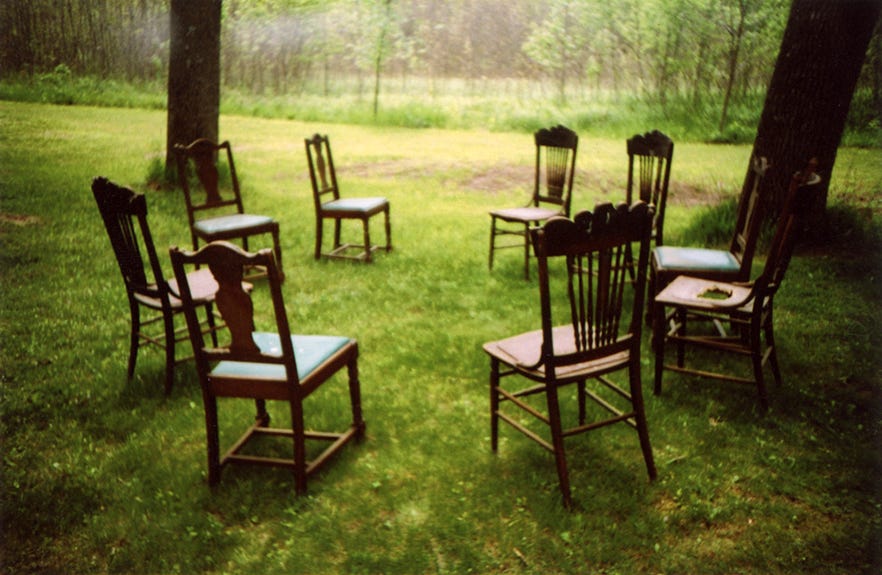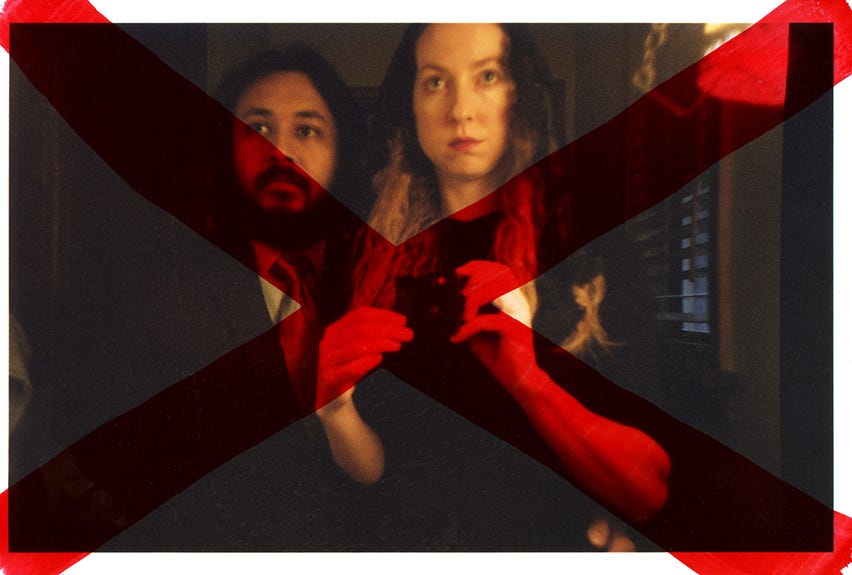The search for truth can seem like a pilgrimage when in fact it’s more like getting lost in the wilderness. The creative history of Pipi Deer reminds me of a journey to a sacred place. Her work engages with states of spiritual transference, which she puts into a form best received as art. Deer presents herself as a witness to the degrees of meaning that will lead to her transformation, and with it, our understanding of how symbolic life can merge with our own. Deer makes art that can reflect a shared inner life; in doing so, it can release us to live a truer existence. Pipi Deer treads the narrow territory between the two, sometimes veering into performance, but often mining her intimate states of being, using the outward appearance of everyday materials as the skin of artifice. Her symbolic actions are specifically chosen despite reflecting everyday drives and desires. They are palpably captured in representative images laden with meaning. The concept of a self-directed mythology is one that emerged with the example of Joseph Beuys. He was the one artist who completely merged himself with objects created to both reflect and manifest a protomythical identity. So much has been made of this role, and so little has been emphasized of his actual biography, that most accept one and discount the other. Other artists from his era and more current, like Hannah Wilke and Tracy Emin, have actively mined their inner lives to formulate expressions and models that not only stand in for their physical presence, they create a context by which one can feel the very life of the artist as a texture and design. Deer subscribes to just such an approach, enshrining her affinity with them.
Each of Deer’s creative series provides different clues to the symbolic journey that is her art-life. One is called “X” and it consists of a series of photographs of family members or friends who have passed away, did not make the cut, or of romantic partners who are in the past, or present but having altered in their status. Each has been marked over with a large X in red marker. The artist describes this series as her way of making images which were beyond their proper use value; they no longer directed the viewer to a verifiable fact, or a state of emotional evidence that remained true in her life. But in marking the images as such, Deer points us toward an idiosyncrasy, for though one can delete, or cross out an image, one can never deny the truth contained within it. The truth of the image remains constant, except that now it resists being muted.
Many of Deer’s works are performative in nature. She enacts a repetitive act, or implies the factuality of repetition in which certain poses and gestures, especially those as captured in specific photographs, place her presence in the context of symbolic meaning. She takes on the role of the main character, enacting scenarios in which dreamlike locales become sites for interpreting dimensions of personal meaning verging on the mythological. In one image she sits in a long white dress, transfixed by a monarch butterfly that has alighted upon her breast. In a video accompanying this image, she lifts the hem of her dress and dozens of butterflies fly out of it. The butterfly is a universally accepted symbol of transformation, freedom, and rebirth. In another scene from the series, Deer is a dead ballerina laying in an antique steel frame bed, her eyes dark, her limbs splayed. In another image she is naked and carrying a chest of drawers through a vast field of dry grass, the object heavy on her back, as she struggles to find its place. In another image we see all the various objects of domestic tranquility–the drawers, the bed, and an old metal stove with a high chimney, all sitting in the same field. In another image she has placed several chairs in a circle. These chairs attain an air of mystery, as if some invisible host were sitting in judgment, or the chairs were old thrones left from a previous age, upon which wise men or kings had sat. To place oneself in any of the chairs is to wonder who one would one face in the circle.
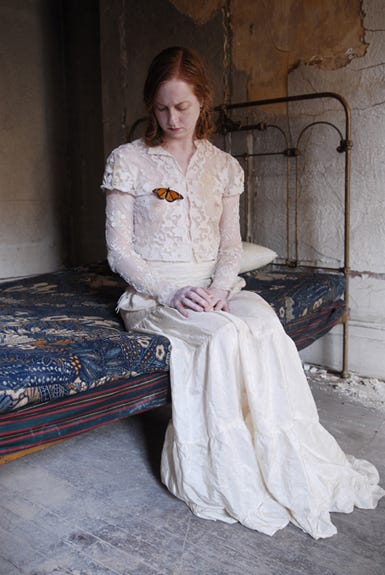

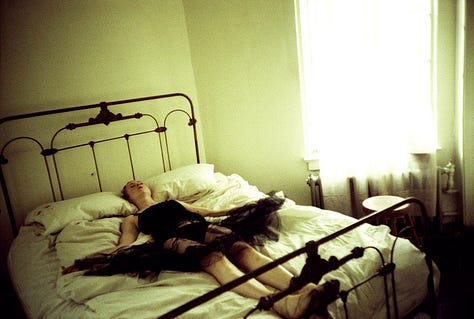
“Red Sari” has Deer floating in a pool of water dressed in a red sari typical of an Indian wedding. This image may be less understood outside of Indian culture, but the color is heavily imbued with symbolic character. The color red is specific to Hindu culture and symbolizes prosperity, fertility, and new beginnings. Red is an auspicious color representing love, power, passion and fertility, strength and intensity. Red is also believed to bring good luck and prosperity, warding off evil spirits. The sari under the water involves heart opening and diving deeply into an idea of what she will become, as well as the toll living life can take.
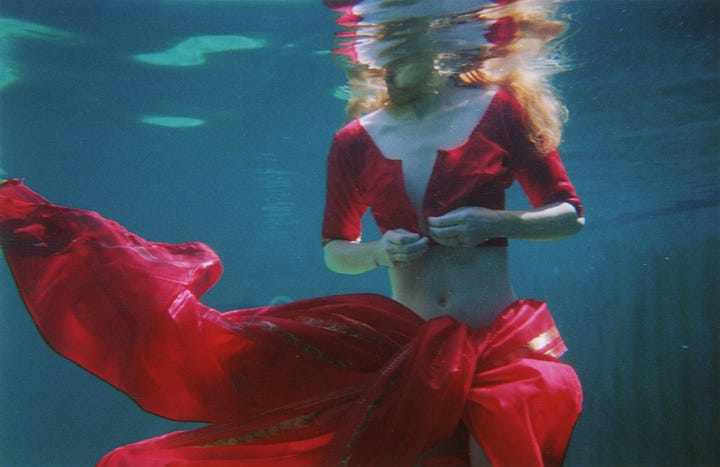
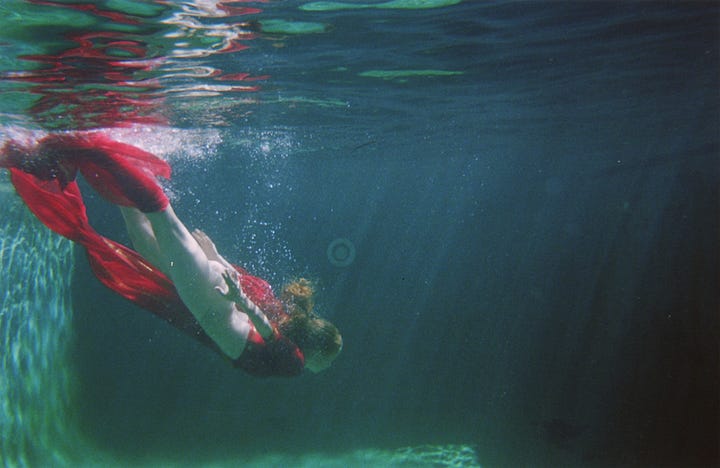
Comparative to her performances are her painting series, “Bloodbath” and “Paint It Black” both of which take inspiration from the Tarot. If there is any indicator of Deer’s willingness to penetrate into a symbolic layer of history and reality, these images are the most persuasive. Many things have changed in the lives of ordinary people since the Middle Ages, but the symbols that have persevered, and the stories that are connected to them, are in full evidence in her paintings. Part legend and part superstition, they portray images that embody degrees of meaning more pervasive and ambiguous than what it presented. Taken out of the cards and into her painterly expression, these images become a narrative of emblematic instances. Unlike the photographs documenting expressive moments in Deer’s performance works and visual poetry autobiography, they exist as oblique historical artifacts charged with the power of interpretive authority. What Deer borrows from them is dynamically enlarged with her color choice and the use of white sheets as a painting surface. Red or Black paint points toward mortality and fate, and they become sympathetic images suggestive of a picaresque tale. In all of these works, and primarily in the performances, there is an an element of ambiguity, an openness to the possibilities for individual interpretation, which allow for a degree of wonder.
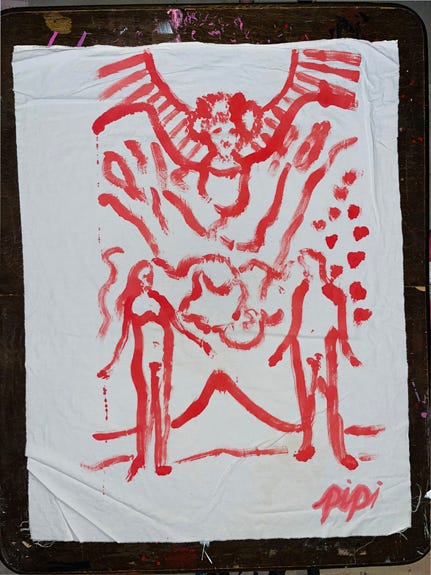

Uncertainty opens up into understanding as our initial feeling of being trapped in difficulties, our strength lessened by limits imposed, can also make us question what matters, and those questions emerge as expressions of identity. These expressions are a chance to be daring. Deer, like Dante at the beginning of his heroic journey, is placed at the interval between finite knowledge and something greater. She is conscious of the struggle to achieve self-hood and its allegorical reflection. Her achievement is in lifting the veil for the rest of us.




